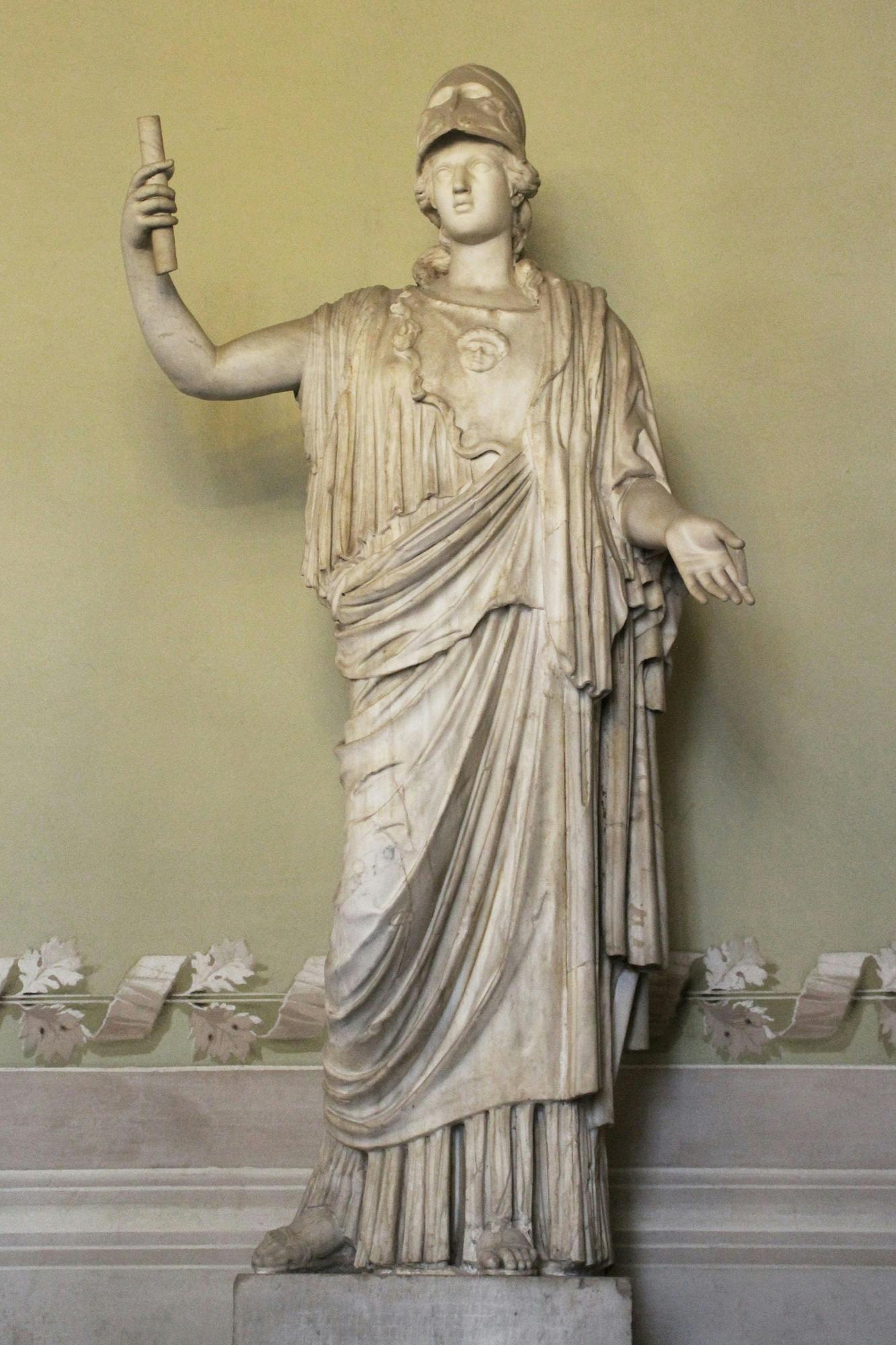Athena Giustiniani
The statue is a copy of the “Giustiniani” Athena, named for the family that owned the most important copy of the work - now in the Vatican Museums - in the middle decades of the 17th century and the early 19th century. The bronze prototype was created in Attic Greece in the late 5th century B.C. or the start of the following century, probably to serve as a cult statue in the temple of Athena on Cape Sounion, on the southern tip of the Attic region.
The goddess is shown in a standing position, in a long robe (known as a chitone) and covered in a cloak. At the height of her chest is the aegis, a short breastplate decorated with the gorgoneion, the image of the head of Medusa, who, according to the myth, had the power to turn anyone who looked into her eyes into stone. Medusa, was beheaded by the hero, Perseus, with the aid of Athena. Perseus offered the head to the goddess, who placed it on her own shield and armour because, even dead, Medusa’s power remained intact.
This statue spent over two centuries in Villa Medici on the Pincio Hill before coming to Florence in 1788. Numerous parts have been restored and are attributable to modern workmanship: the head and body, the bare part of the arms, some of the drapes and the base. Of these integrations, worthy of mention is the helmeted head inspired by the so-called Athena from the Ludovisi collection - also the result of modern restoration by Alessandro Algardi, dated 1627- which, judging by the comparison with several iconographic sources dating back to the end of the 16th and the first two decades of the 17th century, replaced the previous head, also probably modern.
The drapes, with straight folds defined by deep grooves, and the rendering of the hair, which can still be judged against the single surviving fragment on the right shoulder, seem to date the piece to the late 2nd century A.D.
A. Cecchi, C. Gasparri, La Villa Médicis. Le collezioni del cardinale Ferdinando. I dipinti e le sculture, Roma 2009, p. 218, n. 248.1
